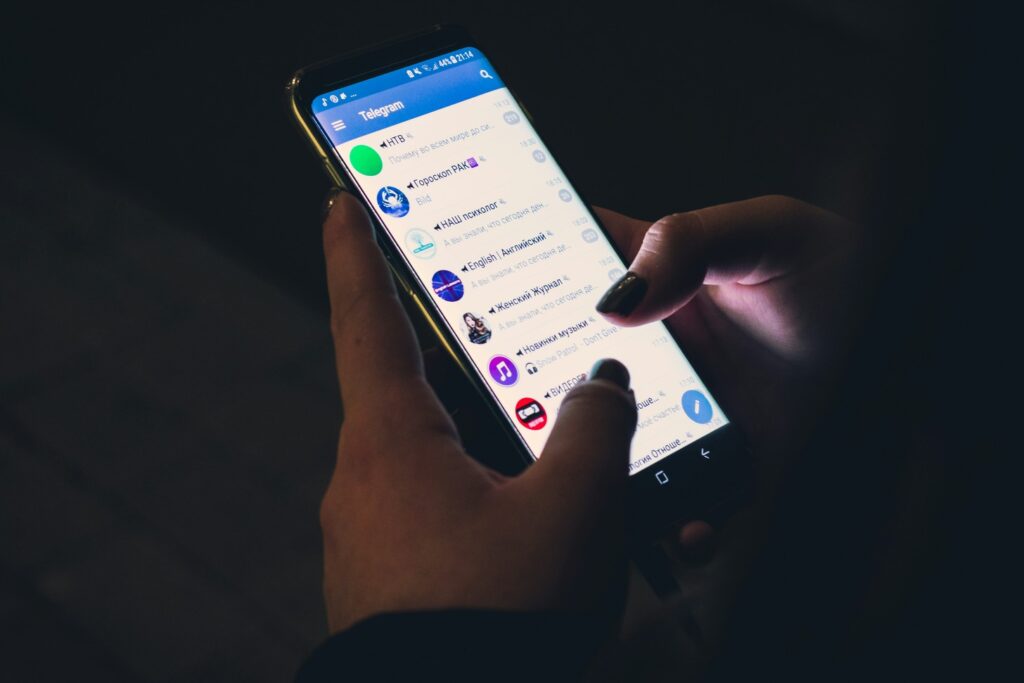Eric Buckley, the CEO of LeadSpot, met with a startup focused on IoT devices and warehouse robotics. They wanted to start generating leads fast. But LeadSpot had a different idea. For a new brand in a growing field, rushing into leads might not be the best strategy1.
LeadSpot suggested focusing on building the brand and reaching more people first. This would set a strong base for future lead generation and make the brand a leader in its field.
LeadSpot created content that met various goals like growing the audience, improving SEO, and building partnerships. This helped the client build a strong identity and connect with its audience. By slowly building trust, the startup could prepare for lead generation.
This strategy worked well. The client saw a 16% HQL to SQO conversion rate in just 8 weeks. This led to ongoing, consistent success in generating new, highly qualified, leads1.
Understanding the Client’s Unique Challenges
LeadSpot teamed up with a startup that focuses on IoT-enabled devices and warehouse robotics. They saw the client was struggling to get leads and build their brand. Being new in a growing field, the client needed a smart plan to gain trust and reach more people.
IoT-Enabled Devices and Warehouse Robotics Startup
This startup was all about the latest tech, like IoT devices and warehouse robots. But, being new in the field made it hard to get noticed and gain trust with customers.
About 15% of companies plan for growth and future operations, and over 20% focus on getting more leads for steady revenue growth3. LeadSpot knew it was key to balance these goals for the client’s success.
Relatively Unknown Brand in a Nascent Industry
Being new meant the client had to work on basic goals to build their reputation and draw in the right audience. LeadSpot suggested a detailed brand visibility enhancement and audience expansion plan instead of just focusing on quick leads.
Focusing on Foundational Goals for New Brands
Launching and growing new brands requires a strong foundation before focusing on getting leads. For brands new to the market, setting foundational goals is key to success. This helps them stand out and grow in a competitive industry.
Enhancing Brand Visibility
New brands should aim to be more visible in their market. This means having a strong brand story, a consistent look, and using different marketing channels to reach their audience. By showing what makes them special and connecting with their ICP, they can gain recognition and trust.
Take Tray Brunner, an eCommerce founder who launched two successful brands. One was in apparel, the other in interior art4. He focused on quality and being eco-friendly to stand out and build a loyal customer base before trying to launch lead generation strategies4.
Expanding the Audience
New brands should also aim to reach more people. This means finding new customers who like what they offer. By studying the market and knowing what potential customers want, brands can speak to a wider audience.
After a positioning project, Sana Commerce saw a 20% increase in average order value and more wins with potential buyers5. They did this by sharing their unique value and reaching more people5.
With more people shopping online, brands can reach customers all over the world. For example, China is expected to have $2.779 trillion in online sales, making up 56.8% of global sales6. By targeting international markets and fitting in with local tastes, new brands can grow a lot6.
By focusing on being more visible and reaching more people, new brands can set themselves up for success. These goals need patience, careful planning, and knowing the market well. But, by working hard on building a strong brand and connecting with the right people, new brands can be set for long-term lead generation success.
Creating Custom Content Hubs
LeadSpot created content hubs for the client with educational resources. The goal was to increase brand visibility and reach a wider audience.
Whitepapers on IoT Devices and Warehouse Efficiency
The hubs featured whitepapers on IoT devices and their impact on warehouse efficiency. These papers offered deep insights and analysis. They helped readers see how these technologies could change the game.
E-books: Guides on Different Warehouse Robotics
E-books were made as guides for warehouse robotics. They provided step-by-step advice and insights. This helped readers understand and decide on robotics for their warehouses.
Infographics with Industry-Specific Trends and New Data
Infographics showed off the latest trends and data in the industry. They made complex info easy to see and understand. This helped the audience get a better grasp of IoT and warehouse robotics.
On-Demand Webinars: Expert Partners, Helpful Discussions, Relevant Topics
On-demand webinars brought together experts to talk about important topics. These webinars were a chance for deep discussions and sharing insights. They covered IoT and warehouse automation challenges and solutions. By promoting the on-demand versions, their audience could engage the content when it’s most convenient, increasing engagement.
Blog Posts: Updates on Technology and New Use Cases
Blog posts kept the audience up to date with tech news and new solution uses. They shared updates, news, and interesting views. This made the client a go-to source for industry knowledge.
Videos: Sub 15-Second Explainer Videos
Short, sub 15-second videos explained key ideas about IoT devices and warehouse robotics. These videos grabbed attention and delivered important messages quickly. They encouraged people to dive deeper into the content hubs.
LeadSpot worked on these content assets to make the client a trusted and leading voice in the industry. A well-planned inbound marketing strategy can greatly improve lead conversion7. These hubs helped build trust, grow the audience, and engage with potential customers deeply.

Crafting Role-Based and Personalized Messaging
LeadSpot knew how important it was to tailor their messages for the client’s target audience. They focused on role-based and personalized messaging to create strong connections and increase engagement with their content hubs.
Promoting and Distributing Content Hubs Directly to the Audience
LeadSpot used a targeted method to make sure the content got to the right people. They used emails and live calls to directly share the content hubs with the client’s ideal audience8. They kept their emails short and to the point, knowing busy executives like quick, direct messages8.
They also knew industry players want unique insights, not the same old info8. So, they used research to draw meaningful conclusions. This showed the client’s expertise and added value to the recipients8.
Utilizing Emails and Live Calls
Emails were a key way to share the content hubs. LeadSpot made sure the subject lines and content highlighted the client’s unique offerings8. They told stories that showed the client’s special traits, connecting with the target audience8.
Live calls were also used to build personal connections with prospects. These calls let them explore the audience’s challenges and show how the client’s solutions could help.
Minimizing Friction with Simple Opt-In for Content Access
LeadSpot made it easy for prospects to get to the content hubs with a simple opt-in. They avoided long forms or many steps, making it easy for people to access the content.
This made it more likely for prospects to engage with the client’s materials. It showed the client’s dedication to a smooth user experience. By making things easy, LeadSpot helped build trust and made the client seem like a trusted expert in their field.
Driving Prospects to the Client’s Website
LeadSpot knew it was critical to engage prospects with great content and guide them to the client’s website. They linked case studies in content hubs to show the client’s skills and success stories. This encouraged prospects to learn more about what the client offers.
This method is a key part of lead generation. It attracts the right traffic and turns them into leads9. Companies that do this well get 50% more sales-ready leads at a 33% lower cost, Marketo says10.
Linking Case Studies to Encourage Additional Engagement
LeadSpot picked case studies that showed the client’s success with IoT devices and warehouse robots. These stories built trust with prospects. By adding these studies to content hubs, LeadSpot made it simple for prospects to see the client’s skills.
Ignoring MOFU content can lose potential customers who like the product but aren’t ready to buy10. LeadSpot used case studies to keep these prospects interested and moving through the sales funnel.
LeadSpot made sure the case studies were easy to find in the content hubs. They added clear CTAs to encourage prospects to visit the client’s website. There, they could find more information, learn about the company, and get in touch for more details.
By bringing qualified prospects to the client’s website and offering strong reasons to engage, LeadSpot set the stage for winning future lead generation campaigns. This strategy increased brand visibility and made the client a trusted expert in IoT and warehouse robotics910.
Prioritizing Educational Goals
LeadSpot focused on educational goals with a content-driven approach. They aimed to give valuable info to their client’s audience. This helped the client to start to become a trusted name in their new and growing market.
Building Trust and Positioning the Brand as a Thought Leader
LeadSpot promoted and distributed informative content like whitepapers, e-books, and webinars. This helped the client gain trust with their audience. By sharing insights and trends, the client showed they knew their stuff.
This content was a big help for potential customers. It gave them the info they needed for smart warehouse tech decisions. By always offering high-quality educational content, the client built a strong brand and drew in decision-makers.

Laying a Solid Foundation for Future Lead Generation Efforts
The main goal of the content was to educate, but it also set the stage for future lead generation. By building trust and showing the client as a leader, LeadSpot made a positive brand image. This made people want to check out the client’s website and content.
The campaign used targeted messaging to reach the right people. It made it simple for them to get the content. This made it easy for potential customers to connect with the client’s content and move towards becoming leads.
As the client kept sharing valuable content and building relationships, they set themselves up for future success. The trust built through content would be critical for turning interested people into leads and customers.
Content-Driven Campaigns for Various Brand Objectives
Content-driven campaigns are ideal for brands to meet their growth goals. They help expand audiences, boost brand visibility, and improve online search rankings. They also nurture leads, build partnerships, spread content far and wide, and gather important zero-party audience insights. LeadSpot uses these campaigns to meet each client’s specific needs and challenges.
Audience Expansion
Expanding the audience is a main goal of content-driven campaigns. By making content that speaks to the audience, brands can draw in new customers. LeadSpot uses data to find the best ways to reach the audience, making sure the message hits home.
Brand Visibility
Boosting brand visibility is an important focus in content-driven campaigns. By sharing quality content on different platforms, brands can stand out online and get noticed. LeadSpot helps clients craft a content plan that matches their brand and leaves a lasting impression.
SEO Optimization
SEO is crucial for getting a brand seen online. By using the right keywords and making content SEO-friendly, brands can climb up search engine rankings. LeadSpot’s SEO experts make sure each piece of content is easy to find.
Lead Nurturing
Content-driven campaigns are great for guiding leads through the sales process. By offering content that meets their needs, brands can build trust and move leads closer to buying. LeadSpot creates content that speaks directly to each lead, increasing engagement and conversions.
Partnership Building
Building partnerships helps brands reach more people and explore new markets. Content-driven campaigns can attract partners and highlight the benefits of working together. LeadSpot finds partnership opportunities and crafts content that benefits both sides.
Content Amplification and ROI Enhancement
To make content-driven campaigns work best, it’s important to spread the content far and get a good return on the investment. LeadSpot uses paid ads, social media, and emails to get the content to the right people. By keeping an eye on how campaigns do, LeadSpot helps clients hit their goals and get the most from their investment.
Informed Data Collection (Valuable Zero-Party Insights)
Content-driven campaigns are a chance to gather valuable zero-party data. By offering special content and experiences, brands can get personal insights from their audience. LeadSpot uses this data to make marketing more targeted and effective, leading to better results for its clients11. Further, the personalization opportunities afforded by these personal insights is gold!
They Wanted Leads ASAP, They weren’t ready, we suggested something better
The IoT startup wanted leads fast, but wasn’t ready. LeadSpot saw this and suggested focusing on building a strong brand first. This would set them up for long-term success12.
LeadSpot knew rushing into lead generation without a strong brand wouldn’t work. Building a brand takes time and effort, like alchemists purifying metals13. They focused on making the brand known and reaching more people. This would help the startup’s lead generation succeed in the long run13.
The startup faced doubts and decisions. LeadSpot guided them, like a compass leading to an oasis13. Through educational content and leadership, they helped the startup make better decisions and find their place in the industry13.
Instead of spending $1700 a month on Facebook Ads, LeadSpot suggested small events to get 200 ideal leads in 60 days12. This plan would bring in quality leads and make the startup a trusted name in their field.
LeadSpot’s advice focused on making the brand strong and engaging with the audience. They believed in the power of hard work and trust. With a solid foundation, the startup could quickly turn leads into clients, just like the webinars ultimately aim to do12.

Patiently Engaging the Audience and Respecting Preferences
Working with an IoT startup, LeadSpot learned how key patient engagement and audience preferences are. They saw how valuing personal choices builds trust and real connections. This matches a trend showing the power of respecting audiences’ views over our own needs14.
Focusing on Brand and Audience-Centric Campaigns for Two Quarters
LeadSpot didn’t jump into getting leads right away. They focused on brand-centric campaigns and audience-centric campaigns for two quarters. This helped them boost brand awareness and grow their client’s audience, setting up for lead generation later.
Launching into Lead Generation Efforts Afterward
After focusing on the brand and audience, LeadSpot started on lead generation. They knew when to start was an important detail. By engaging the audience thoughtfully and respecting their choices, they built a strong base of interest.
The agency made messages that fit different people and sent them through emails and calls. They made it easy for people to get content by offering simple sign-ups.
They pushed people to the startup’s website and linked to case studies to keep them interested. This careful way of building relationships and the right timing of lead generation led to much better results for the client.
The Results: Impressive Conversion Rates
LeadSpot’s approach for this IoT devices and warehouse robotics startup was a huge success. They focused on making the brand more visible and reaching more people. This set the stage for great lead generation.
16% HQL to SQO Conversion Rate in 8 Weeks
The big win was a 16% conversion rate from high-quality leads to sales-qualified opportunities in just 8 weeks11. This shows how well LeadSpot works with leads, moving them through the sales process. They used educational content and messages that felt personal, building trust and leading to more conversions.
Using positive words in messages and calls to action can really boost conversions, sometimes by up to 19.47%15. LeadSpot applied this knowledge to make content and calls to action that hit the mark with their client’s audience. This helped them achieve a 1.5 times higher HQL to SQO conversion rate than they were seeing through internal efforts.
Ongoing Success and Effectiveness
LeadSpot’s success didn’t stop after 8 weeks. They keep an eye on how well leads move through the funnel and adjust their strategies based on data11. Their patient approach and respect for what the audience likes have built a strong base for future lead generation.
Seeing all leads as top prospects until proven otherwise has led to success half the time16. This attitude, along with personalized messages and educational content, has been ideal in moving leads towards sales qualified opportunities.
As LeadSpot keeps improving their strategies, the IoT startup will likely see steady growth. The 16% HQL to SQO conversion rate is just the start of a successful partnership. This partnership will help the startup stand out in the IoT and warehouse robotics fields1116.
Conclusion
When a new brand looks for leads quickly, it’s first necessary to check if they’re ready. LeadSpot advised the IoT startup to focus on building a strong brand and engaging with their ideal audience first. This step was crucial before starting to generate leads.
They suggested making custom content, sending out personalized messages, and slowly building a connection with the audience. This careful planning helped set a strong base for the client’s future growth.
The content strategy focused on teaching, building trust, and growing the audience. This led to a 16% HQL to SQO conversion rate in just 8 weeks. This shows how focusing on a strong brand and the right audience can lead to success.
New brands should think about this method for getting leads. It helps them build a solid base and connect with their audience deeply before looking for sales. By focusing on making their brand known, engaging with their audience, and using content well, startups can become leaders in their field. They’ll attract better leads that are more likely to buy.


